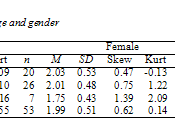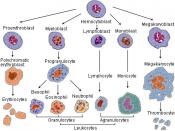Wages for the Ages - Nonparametric Hypothesis Testing Overall experience is no longer the most valuable commodity and some say experienced staff (ages 40+) earn less money (Woolnough, 2004). On the other hand, some say younger workers (under 40) are getting the short end of the stick as they start their career for half the amount of older seasoned workers. Are wages for these age groups equal? With that question in mind for week three's paper and presentation Team A decided to use the Wages and Wage Earners data set to determine if the data reflected equality in wages for the ages. The Wages and Wage Earners data set was compiled of 100 wage earners ages 18-64 seen in table 3. There were 46 wage earners in the 41-65 age set and 54 wage earners in the 18-40 year age sample (Lind, Marchal & Wathen, 2008). Do wage earners ages 41-65 earn the same pay as wage earners ages 18-40?The Parametric CounterpartIn the assignment for week three Team A failed to reject the null hypothesis: Wage earners ages 18-40 earn the same pay as wage earners ages 41-65.
The significance level of .05, the z-statistic and a two-tailed test was used to determine the truth of the hypothesis. For week four the team is to use the same information to conduct an equivalent, nonparametric test of hypothesis. Nonparametric tests makes less rigid demands of the data. The assumptions of normality , constant variances and like standard deviations are not necessary. The team chose to analyze the data using the Wilcoxon-Mann-Whitney test as a counterpart. "The Mann-Whitney test is a nonparametric test to compare two populations, utilizing only the ranks of the data from two independent samples" (Doane & Seward, 2007). After ranking the combined samples of the data the Mann...


